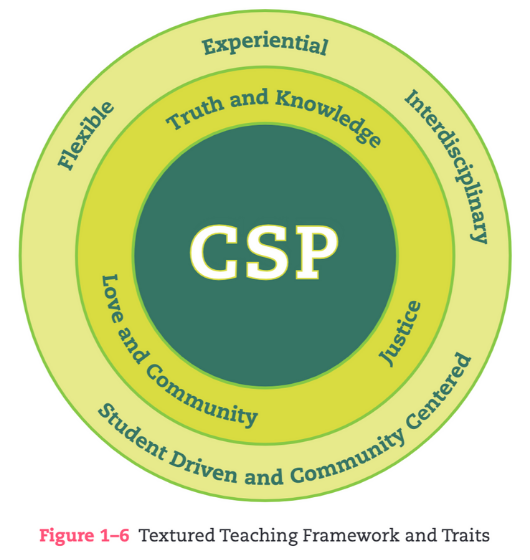
The following is excerpted from Textured Teaching: A Framework for Culturally Sustaining Practices by Lorena Escoto Germán.
I offer Textured Teaching as a dynamic framework with strategies that aim to engage all learners to work toward social justice. Now, let me remind you of what I mean by social justice, because that has become a popular, catchall phrase. I am talking about the redistribution of power and access so that all people, regardless of their identities, have equitable access to resources and power. Equitable is not the same as equal. I’m talking about “antiracist discrimination” as Kendi explains in How to Be an Antiracist, which forwards that “to treat some persons equally, we must treat them differently” (2019, 19). This means restructuring how we’ve historically done things in this country that oppressed and marginalized many people based on various elements of their identity and favored only a narrow few. I’m talking about changing this system so that we can all be free. That is social justice. It’s not a topic, a month of study, a unit, a book, or kindness.
The three values I hold dearly for social justice teaching are love and community, justice and truth, and knowledge. These values lead to spaces where social justice is at the center.

Love and Community
To teach for social justice, you have to believe that students are worthy of love and respect; my practices should respect your humanity and by doing so, treat you with love. It goes beyond affection, into action that focuses on sustaining your humanity. We’re all part of communities—families, cities, and cultures. Respecting and acknowledging your communities means I welcome all of you and your community’s voices. As a Textured Teacher, I therefore value your life and culture.
Justice
In valuing justice, I am concerned with restoration. I want reparations of wrongdoing, equality when applicable, and equity at all times. Justice is concerned with systems that keep people free from oppression via institutionalized harm. As a Textured Teacher, then, your value for justice pushes you to teach in a way where students will question and, ultimately, dismantle the systemic injustices we currently experience. Your teaching is liberating.
Truth and Knowledge
Lastly, to say we value truth and knowledge means we are concerned for an education that is whole, complete, truthful, and fills us with the knowledge we need to bring about the justice we dream of. We are empowered to engage students and each other in learning that is challenging and full of uncomfortable, but necessary, conversations.
The Traits of Textured Teaching and What You’ll Find in the Book
Those values inform the traits of Textured Teaching: student driven and community centered, interdisciplinary, experiential, and flexible. These traits are the strategies of Textured Teaching. When strategically implemented, these four traits create an overall classroom experience that reflects the values, is highly rigorous, and is also engaging.
Student-driven and community-centered teaching is focused on people and power. Textured Teaching requires working on developing relationships with students while upholding the value of love and community. In Chapter 2, I go into detail on strategies you can use to enact this trait, which involves incorporating student voice, community events, and a general celebration of culture.
Interdisciplinary teaching makes meaning of texts by involving research-based exercises, discussing historical context and making connections, and integrating other content areas into the study of a text to work toward deep analysis. In Chapter 3, I offer strategies for doing this interdisciplinary work, including samples from my own teaching.
Experiential teaching is sensorial and physical because our bodies should be engaged in our learning, both for engagement, but also for comprehension. Using our bodies to learn also helps us to work on empathy because the ideas and content are consumed in visceral ways. Our reactions are honest and felt deeply. In Chapter 4, I spend time talking about how to offer students the opportunity to experience the books you’re teaching, how it all connects to deeper learning, and I offer ideas for various books that you can use.
Flexible teaching is one of the areas where we have the chance to enact mercy, grace, and understanding. Being flexible with ourselves, with our students, and with curricula enables us to respond to our students’ needs, engage them as individuals, and take into consideration our context. In Chapter 5, I explain how to do this through strategies around assessment, discussion, grading, tasks, and more.
If we think of Textured Teaching as the woven tapestry described in the introduction, then it all comes together when you step back and look at the process of this teaching approach. You plan and focus your units through the framework of love and community, justice, and truth and knowledge. You enact those values through the four traits and develop strategies for working with students. Figure 1–6 shows how it all comes together and is connected. I chose to use concentric circles to highlight how Textured Teaching is not linear, but cyclical. At the core of Textured Teaching is a culturally sustaining pedagogy, and out of that flows the values of social justice teaching, which is the stance of Textured Teaching. In the outermost circle you’ll find the traits, or the framework, of this approach, which is what these ideas look like in practice.


